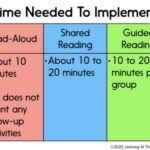Guided writing is a valuable pedagogical technique designed to bolster writing skills. By providing individuals with a structured framework and clear guidelines, it helps them develop their ability to articulate thoughts and organize ideas effectively. Let’s delve into “What Is Guided Writing With Examples,” exploring its purpose, classroom applications, and the benefits it offers to learners.
Understanding the Essence of Guided Writing
Guided writing serves as a bridge, guiding writers from initial confusion to confident expression. Instead of facing a blank page with complete freedom, writers are provided with tools that act as scaffolding. These may include prompts, sentence starters, graphic organizers, or specific instructions related to content, structure, and style. The ultimate goal is to cultivate strong writing skills and empower writers to discover their unique voice over time.
Guided Writing in Action: Examples in the Classroom
So, what does guided writing look like in the classroom? Imagine a scenario where you, as the teacher, assign students to write a persuasive paragraph about the importance of recycling.
Here are some ways you might implement guided writing:
-
Providing a Template: Offering a partially completed paragraph with sentence stems like, “One reason recycling is important is…”, “This is because…”, and “Therefore, we should…” The students then fill in the blanks with their own ideas and supporting details.
-
Offering a Graphic Organizer: A chart or diagram that guides students to brainstorm reasons for recycling, evidence to support those reasons, and a concluding statement. This helps them structure their thoughts before they begin writing.
Alt text: A graphic organizer example shows students how to brainstorm reasons, evidence, and concluding statement about recycling.
-
Modeling: Sharing a strong example paragraph about recycling and discussing its structure, vocabulary, and persuasive techniques.
-
Specific Instructions: Providing clear instructions about the length of the paragraph, the target audience, and the specific points to address (e.g., environmental benefits, economic advantages).
Guided writing can be adapted for various settings. It can occur in a whole-class setting, where the teacher leads the process step-by-step, or in small groups or one-on-one sessions, allowing for personalized instruction and tailored feedback.
The Benefits of Guided Writing: Why Use It?
Why incorporate guided writing into your instructional toolkit? Research suggests it can significantly improve students’ writing abilities. Let’s consider some key benefits:
-
Enhanced Fluency: Guided writing can help students overcome writer’s block and generate text more easily. The structure provided acts as a catalyst, freeing them to focus on content rather than struggling with where to begin.
-
Improved Accuracy: By focusing on specific grammatical or stylistic elements, guided writing helps students refine their accuracy in terms of grammar, spelling, and punctuation. Prompts can specifically target areas where students commonly struggle.
-
Increased Complexity: Guided writing can encourage students to experiment with more sophisticated sentence structures and vocabulary, leading to more complex and nuanced writing.
-
Boosted Self-Efficacy: As students experience success with guided writing, their confidence in their abilities grows. This sense of accomplishment fuels their motivation to tackle more challenging writing tasks.
-
Encourages Motivation to Write: Guided writing helps students feel more comfortable writing as it offers assistance along the way and reduces anxiety about the writing process.
-
Facilitates Feedback and Support: Guided writing offers opportunities for teachers to provide guidance at various stages of the writing process, enhancing learning outcomes.
Alt text: Teacher is providing one-on-one guided writing support to student in a classroom.
It’s important to note that the effectiveness of guided writing depends on its implementation. While beneficial on its own, it’s often most powerful when integrated with other instructional strategies, like independent writing, peer review, and self-reflection.
Guided Writing: A Valuable Tool
In conclusion, guided writing is a versatile and effective technique for developing writing skills. By providing structure, support, and targeted instruction, it empowers students to become more confident, accurate, and expressive writers. When incorporated thoughtfully into a comprehensive writing program, guided writing can unlock students’ potential and foster a lifelong love of writing.
